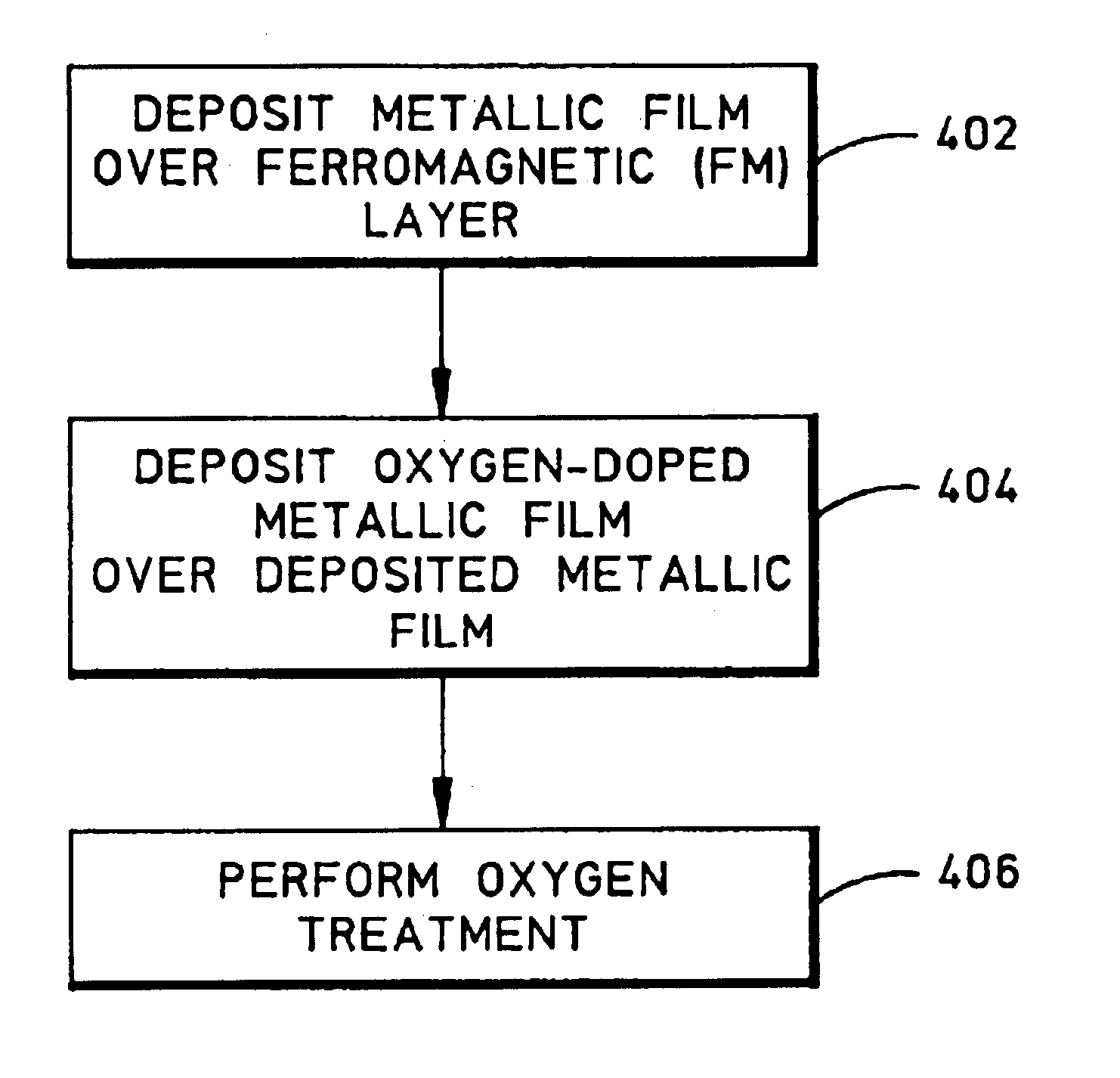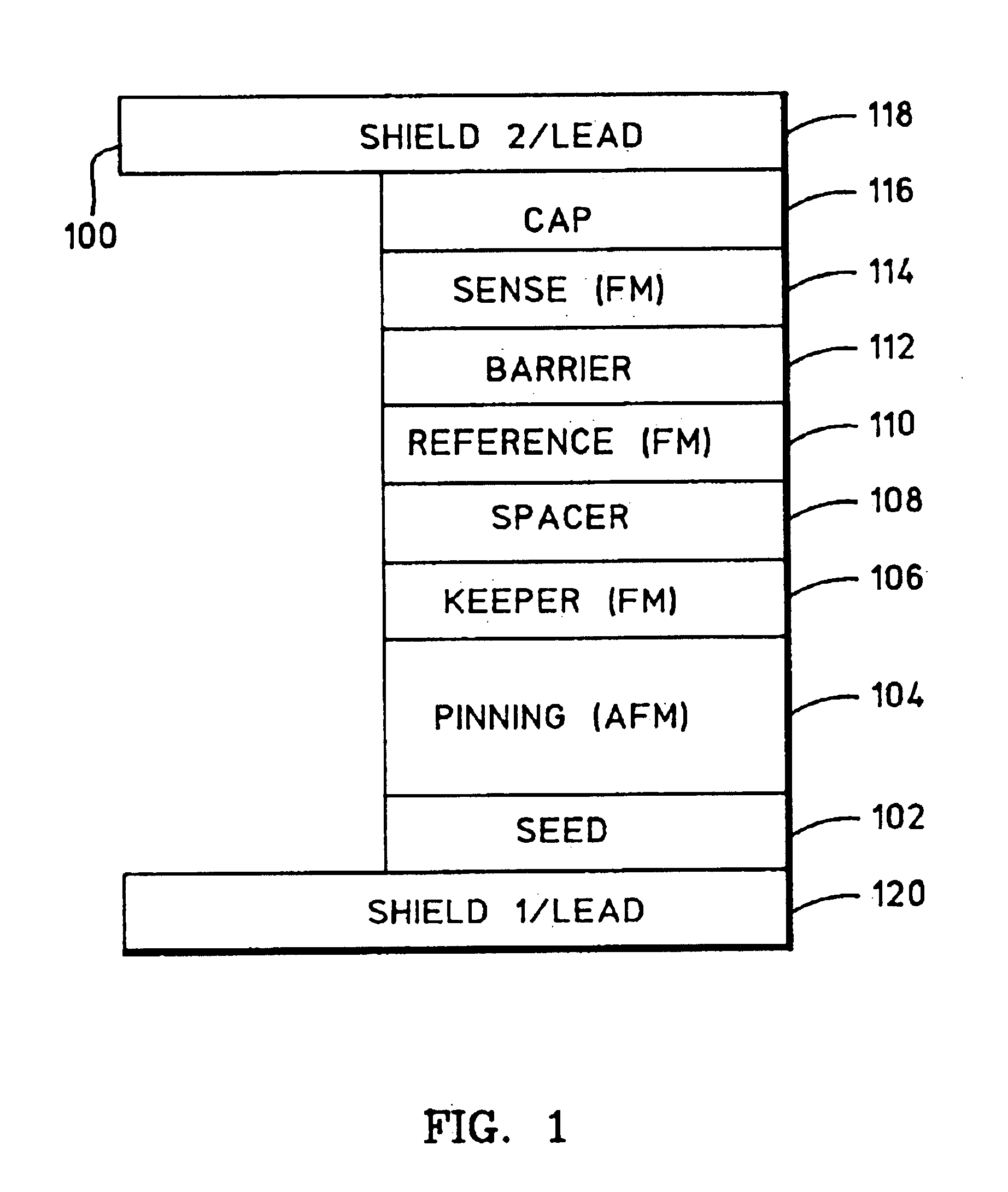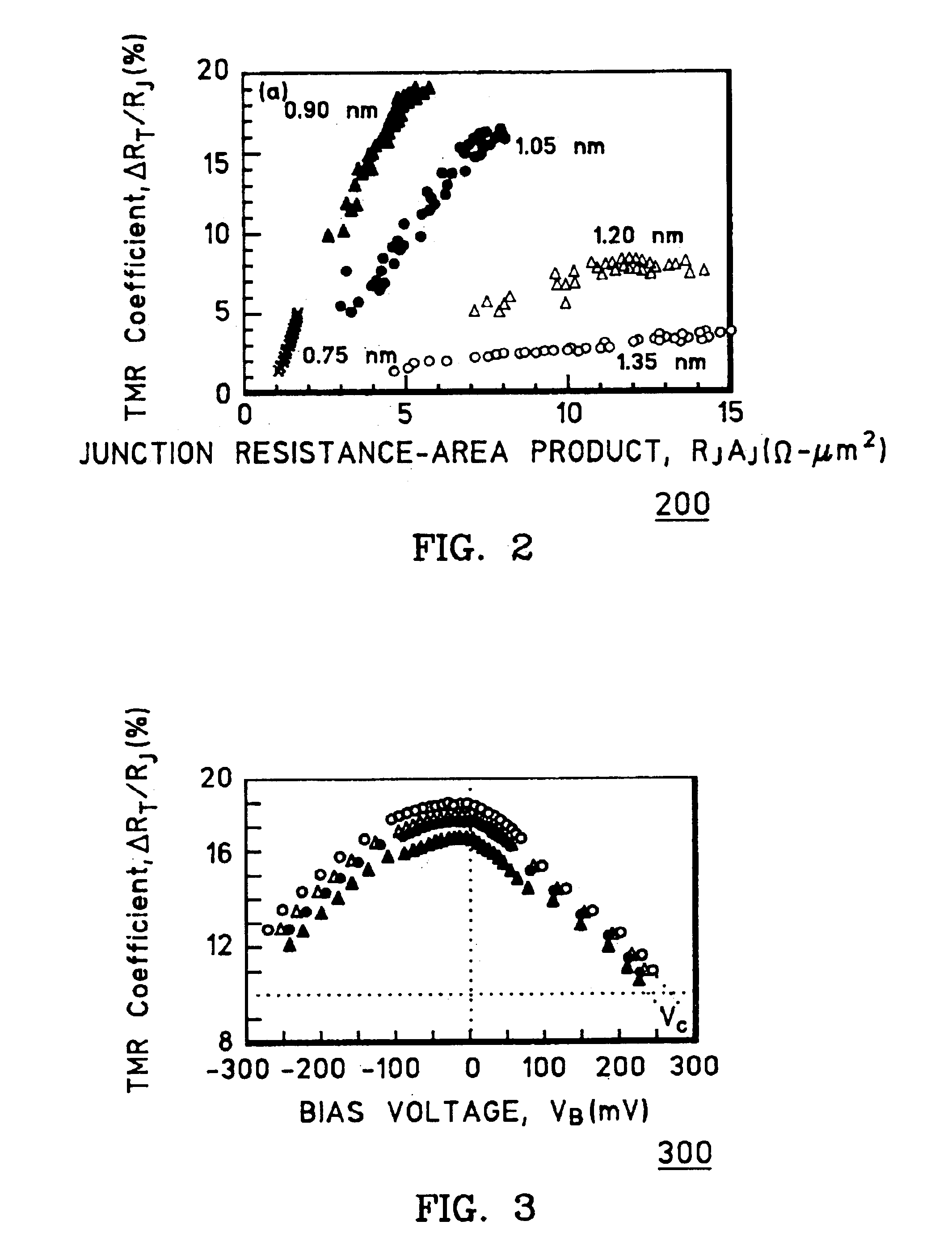Method of forming a barrier layer of a tunneling magnetoresistive sensor
a tunneling magnetoresistive and sensor technology, applied in the field of tunneling magnetoresistive (tmr) sensors, can solve the problem that tmr sensors cannot be used in practice as submicron-sized read sensors for magnetic recording at high densities, and achieve the effect of preventing electrostatic discharge damage and magnetic and tmr properties
- Summary
- Abstract
- Description
- Claims
- Application Information
AI Technical Summary
Benefits of technology
Problems solved by technology
Method used
Image
Examples
Embodiment Construction
The following description is the best embodiment presently contemplated for carrying out the present invention. This description is made for the purpose of illustrating the general principles of the present invention and is not meant to limit the inventive concepts claimed herein.
FIG. 4 is a flowchart which describes a method of forming a barrier layer of a tunneling magnetoresistive (TMR) sensor. By making a TMR sensor with a barrier layer in accordance with the method described in relation to FIG. 4, the TMR sensor is provided with good magnetic and TMR properties. A barrier layer is typically formed over and on top of a ferromagnetic (FM) layer, such as the reference layer of a “bottom” TMR sensor comprising seed / pinning / keeper / spacer / reference / barrier / sense / cap layers, as shown in FIG. 1; or the sense layer of a “top” TMR sensor comprising seed / sense / barrier / reference / spacer / keeper / pinning / cap layers. The method of FIG. 4 begins with the formation of the barrier layer over the F...
PUM
| Property | Measurement | Unit |
|---|---|---|
| height | aaaaa | aaaaa |
| width | aaaaa | aaaaa |
| easy-axis coercivity | aaaaa | aaaaa |
Abstract
Description
Claims
Application Information
 Login to View More
Login to View More - R&D
- Intellectual Property
- Life Sciences
- Materials
- Tech Scout
- Unparalleled Data Quality
- Higher Quality Content
- 60% Fewer Hallucinations
Browse by: Latest US Patents, China's latest patents, Technical Efficacy Thesaurus, Application Domain, Technology Topic, Popular Technical Reports.
© 2025 PatSnap. All rights reserved.Legal|Privacy policy|Modern Slavery Act Transparency Statement|Sitemap|About US| Contact US: help@patsnap.com



